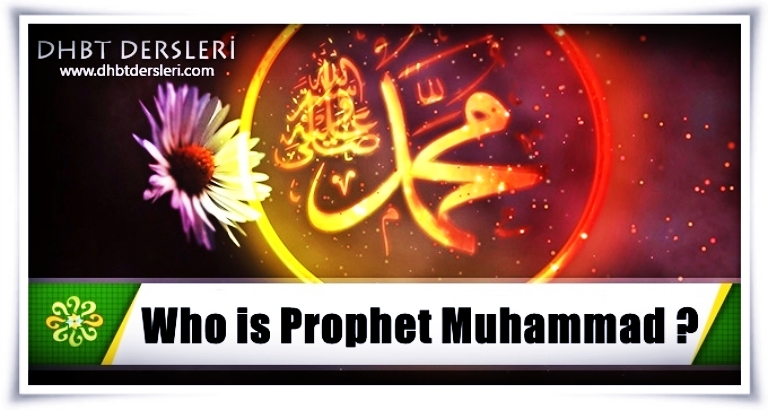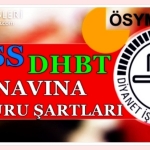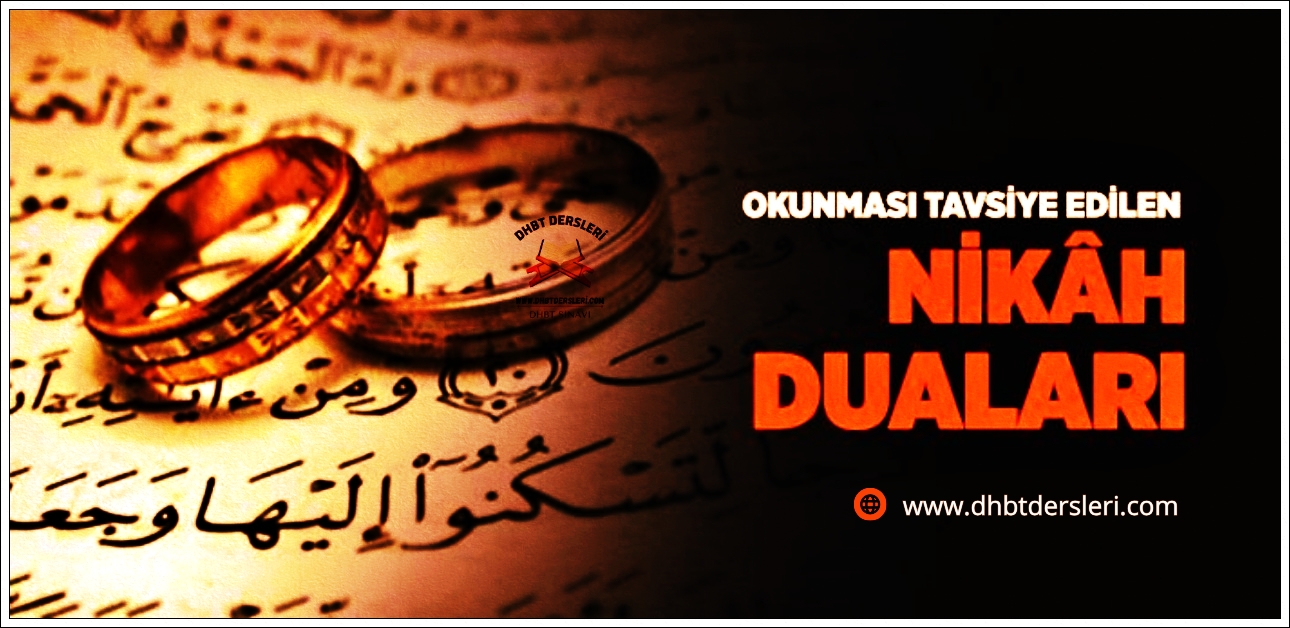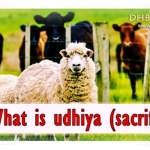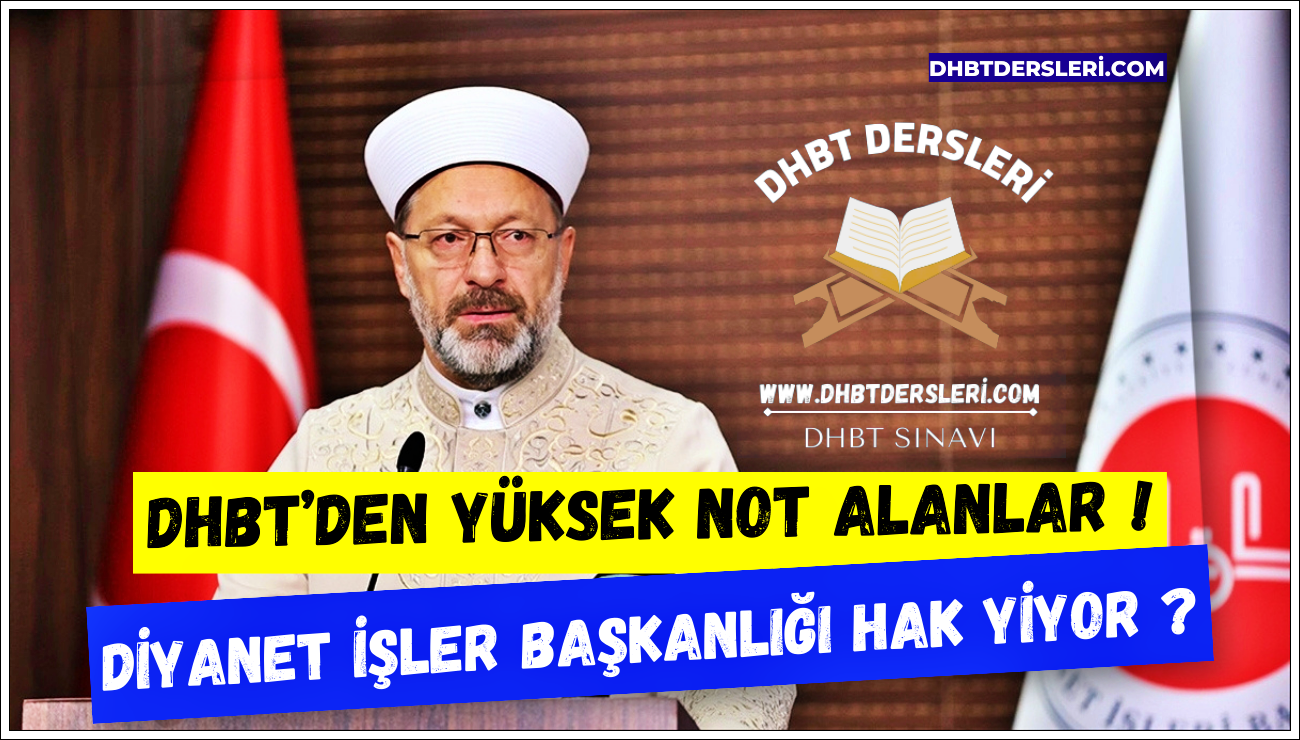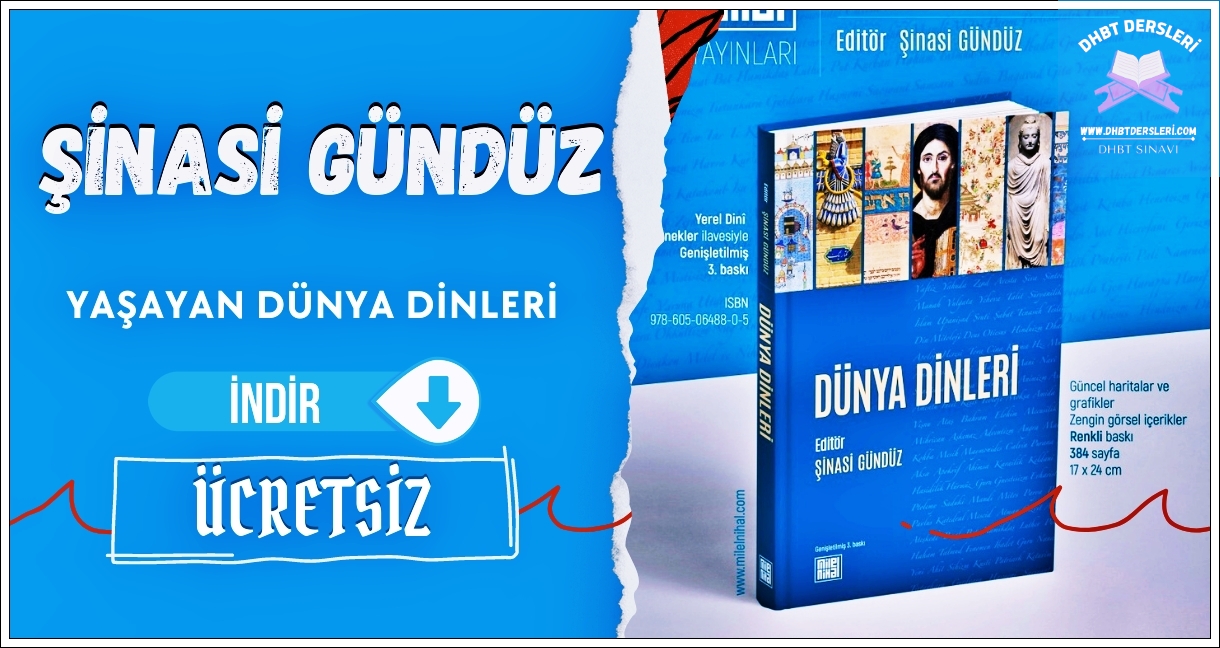Who is Prophet Muhammad ?
Prophet Muhammad was born in the city of Mecca in 571 A.D. and died in the city of Medina in 632 A.D. The family he was born into was part of the respected Hashemite tribe, which administered Mecca. His father’s name was Abdullah and his mother’s name was Aminah. He grew up as an orphan (Duhaa 93:6), because Abdullah passed away before Aminah gave birth to Muhammad and Aminah herself died when little Muhammad was about six years of age. The orphaned Muhammad grew up under the protection of his grandfather, Abdulmuttalib, who was an elder of Mecca. Young Muhammad was engaged in commerce, which took him as far as the lands of Sham (modern day Syria, Lebanon, and Palestine). He was such a reliable and trustworthy man that all of Mecca knew him as “Muhammad al-Amin” (Muhammad the Trustworthy).
His exceptional honesty earned the attention of Khadija, a woman engaged in commercial and business partnership with him. Muhammad later married Khadija, who was already married twice before marrying him. At the time of marriage, Khadija was a 40-year-old single mother of three while Muhammad was a 25-year-old young man consummating his first marriage. The couple parented six children.
After assuming his prophetic mission, Prophet Muhammad spent 13 years in Mecca where he applied every effort to disseminate the Qur’anic teachings despite constant harassments and real dangers Meccan polytheists posed to him and his companions. He spent the last 10 years of his life in Medina where he migrated upon receiving information that polytheists were plotting to assassinate him. He spent those years in Medina building a model Muslim community and delivering the Qur’anic message to wherever he and his companions could reach. Muslims from Mecca joined the Prophet in his migration and formed a significant community with the Muslims of Medina.
This Muslim community spent the first half of the Medina period repelling assaults on and attempts to extinguish their small community. Such attempts caused the battles of Badr, Uhud and Khandaq, to name only the significant ones. In the hijri year six, Meccan polytheists and Muslims of Medina signed the Peace Treaty of Hudaybiyya, thereby recognizing the existence of an Islamic city-state in Medina. Coupled with the conquest of Khaybar a year later, the young Islamic state confirmed its status as a new regional superpower.
Having victoriously returned to Mecca without bloodshed in the hijri year eight, which they were expelled from under the threat of death, and decisively overpowering enemies at the battle of Hunayn, Muslims have eliminated the last traces of military threats to their existence. Prophet Muhammad died in a room next to a mosque he had built in Medina on Rabi ul-Awwal 11, 10 hijri (June 8, 632 A.D.), and was buried therein. At the time of his death, he was 63 years old. His grave is still in Medina and has been available for visiting over the last 1,400 years.
When, where and how did Muhammad learn that he was a prophet?
Before assuming the Allah-ordained prophetic mission, Muhammad did not practice any religions known in the Arabian Peninsula; he fulfilled no religious task; he was not a member of any preacher class; he was not a member of any religious group. He used to withdraw from the moral decay and societal injustice he witnessed. In such times of solitude and seclusion in the Hira cave on a mountain near Mecca, he extensively pondered over the meaning of life and human existence.
The soon-to-be prophet Muhammad was 40 years old when the initial revelation descended upon him in the month of Ramadan in Hira in the summer of 610 A.D. (see: 2:185 and 97:1). The angel of revelations came to Prophet Muhammad with the divine command, “Read in the name of thy Sustainer!” (`Alaq 96:1) The first instance of revelation thus speaks about the “knowledge of existence and truth.” Therefore, humans must undertake any endeavors and observations of whatever exists “in the name of the Lord” and must not separate knowledge and reasoning from observation. Just like a masterpiece would not be possible without its master and cannot be invoked without mentioning the master’s name, existence cannot be comprehended independently of its creator and designer, Allah, for existence is one of Allah’s masterpieces. This was the message the initial revelation episode conveyed.
What difficulties did Prophet Muhammad and his companions face in Mecca?
The revelation initially spoke directly to Muhammad and instilled a prophetic character and morale in him. For instance, in one of the initially revealed verses, Allah commands him to remain awake part of nights, pray to and worship Allah, and extensively analyze and deeply ponder over the verses being revealed to him (Muzzammil 73:1-11). The next step was encouraging him to become “actively good” by commanding, “Arise and warn!” (Muddaththir 74:2). Upon receiving this command, he spoke of the revelations to his closest relatives and family. In so doing, he did not add or fall short in delivering the message. The first group of people who believed in the message Prophet Muhammad brought were his wife Khadija, his nephew Ali, Khadija’s slave Zayd, one of his old friends Abu Bakr, Abyssinian slave Bilal, an old citizen of the Byzantine Empire and the freed slave Suhayb Rumi (Suhayb the Roman).
One of the younger people who believed in the prophetic message, Arkam, turned his house into a school for teaching the Qur’an. In the initial years of prophethood, many people heard the Qur’an for the first time and submitted to Allah in Arkam’s house. The number of believers was steadily growing, but so was the Meccans’ anger with them.
The Meccan polytheists’ actions toward Muslims could perhaps be summarized in the following points:
1) Silent observation;
2) Ridicule and derision;
3) Slander and assault; and
4) Physical violence and torture. The last part of their resistance to Islam lasted until Muslims left Mecca and migrated to Medina. Several Muslims whose tribes were not strong enough to protect them died under torture. Unable to endure violence and torture any further, a group of Muslims left Mecca for Abyssinia in the fifth year of the prophetic mission. The Abyssinian authorities granted them the status of refugees and asylum seekers until the hijri year seven, i.e. during the 15 years they spent there. Meanwhile back in Mecca, the polytheists imposed a strict trade embargo on Muslims, which devastated them over the three years of its enforcement. The polytheists hoped the embargo would make them abandon their faith and would render them physically weak and socially abandoned. However, disputes erupted among them and the embargo was officially cancelled in its third year.
All these harsh conditions in Mecca forced Prophet Muhammad to seek other alternatives for Muslims’ peaceful existence. Could Taif, a settlement near Mecca, be that option? On the contrary, the city chieftains rejected Prophet Muhammad’s call and drove him out of Taif by urging children to throw stones at him and charging dogs at him. That was thus far the hardest day he ever lived: he was assaulted in Taif and was only able to return to his hometown of Mecca under the protection of an allied family or face death. Shortly after this painful experience, a small group of Medina residents were inspired and moved by his speeches. Just a year later, they returned as a larger group and declared their faith in Allah’s oneness and Muhammad’s prophethood; they then invited him to move to Medina. Although Prophet Muhammad approved of the migration, he allowed others to do so and remained in Mecca himself. After Prophet Muhammad had stealthily emigrated for Medina, the polytheists of Mecca announced a 100-camel bounty for anyone who would capture him. Prophet Muhammad planned his only option to survive down to its finest details and implemented it in 622 A.D.
What does the initial revelation discuss?
The first instance of revelation conveyed the initial five âyahs of Surah 96 (The Clot). The addressee of these commanding verses is the first recipient of the revelation—Muhammad. The commanding tone of these verses pursued the goal of personality formation. The initial revelation could perhaps be summed up in the word “knowledge.” The commandment “Read!” means “Learn!” and “Acquire knowledge!” The source of the “Read!” commandment was obvious and the recipient of the commandment was obvious, yet what was to be read was unclear. In situations like this, one is to look into a deeper meaning: “Read everything.” The initial revelation’s meaning is the following: “The Universe and whatever is therein are an open book. Then read it in the name of your Lord Allah!” And the following is the language the revelation uses: “Read in the name of thy Sustainer, who has created man out of a germ-cell! Read – for thy Sustainer is the Most Bountiful One who has taught [man] the use of the pen, taught man what he did not know!” (‘Alak 96:1-5)
This verse commenced a 23-year-long revelation period, which lasted until the end of Prophet Muhammad’s life.
The Qur’an transformed Muhammad, who was a passively good person before the revelation, into an actively good Prophet Muhammad. For that to happen, the Qur’an ordered that he first change himself and form an even better personality: “O thou enwrapped one! Keep awake [in prayer] at night, all but a small part of one-half thereof – or make it a little less than that, or add to it [at will]; and [during that time] recite the Qur’an calmly and distinctly, with thy mind attuned to its meaning. Behold, We shall bestow upon thee a weighty message [and,] verily, the hours of night the mind most strongly and speak with the clearest voice, whereas by day a long chain of doings is thy portion. But [whether by night or by day,] remember thy Sustainer’s name, and devote thyself unto Him with utter devotion. The Sustainer of the east and the west [is He]: there is no deity save Him: hence, ascribe to Him alone the power to determine thy fate.” (Muzzammil 73:1-9)
The third Qur’anic passage encouraged Prophet Muhammad to be active and shun passiveness: “O thou [in thy solitude] enfolded! Arise and warn! And thy Sustainer’s greatness glorify! And thine inner self purify! And all defilement shun! And do not through giving seek thyself to gain, but unto thy Sustainer turn in patience.” (Muddaththir 74:1-7) One of the initial instances of revelation delivered Surah Al- Fatihah , which every Muslim reads several times in each prayer: “In the name of Allah, The Most Gracious, The Dispenser of Grace: all praise is due to Allah alone, the Sustainer of all the worlds, the Most Gracious, the Dispenser of Grace, Lord of the Day of Judgment! Thee alone do we worship; and unto Thee alone do we turn for aid. Guide us the straight way, the way of those upon whom Thou hast bestowed Thy blessings, not of those who have been condemned [by Thee], nor of those who go astray!” (Fatihah 1:7)
What was the initial reaction to prophet Muhammad’s mission?
He used to be passively good before the revelation, which transformed him into an actively good person. While he was a passively good person, the leaders of Mecca highly esteemed him as “Muhammad the Trustworthy,” but when he turned into an actively good person thanks to the Qur’an, they called him “a possessed one.” The reason behind such attitudes was the fact that he turned from a secluded person, who did not meddle in others’ business, into an uncompromising person, who was ready to die for his cause. He has not done any single supernatural or exceptional thing before the prophetic mission, nor had such an event happened to him. If that were the case, it would have certainly been documented and levied against him.
However, nobody was able to say so. Instead, they claimed he caused rift between the father and the son and between the husband and the wife using magic. It is easy to understand his enemies’ befuddlement, for new Muslims withstood pressure, persecution and even torture but did not give up their new faith. The polytheists of Mecca could only say, “They are possessed by demons!” Witnessing a relentless and uncompromising attitude, the polytheists devised a four-step plan against Prophet Muhammad and his followers: 1) they ignored and overlooked the new faith group; 2) they ridiculed poor and weak Muslims; 3) the increasing numbers of Muslims forced the polytheists to resort to slandering and harassing them; finally, 4) the polytheists inflicted physical violence and tortures. They fell so low that they would spit on Prophet Muhammad and say slurs. They even went to such an extent as throwing a slain camel’s internal organs on Muhammad while he was praying next to the Kâbah. Nonetheless, Prophet Muhammad remained steadfast on the mission he was divinely tasked with. After a short “individual call” (“da’wah”) period, he proceeded onto a “collective call” period.
He called the Meccans to saying, “There is no god but Allah! Say so, and save your souls!” The initial group that responded to this call was those who were sincerely and deeply discontent with injustice and inequality in their society: Young people, slaves, women and oppressed ones. The revelation of Surah 53 (The Star), which openly condemned idol-worshipping in Mecca, was the turning point for the polytheists: they launched physical assaults and attacks on the vulnerable members of the Muslim community—slaves and unprotected tribe members. Seeing oppressions progressing, Prophet Muhammad arranged for the departure of a group of Muslims to the lands of Christian Abyssinia then under the rule of a just Christian king. This group remained there for 15 years and was able to return in the year seven hijri following the conquest of Fort Khaybar. This conquest was a turning point for the Muslim community of Medina, which guaranteed a safe future.
What does the Qur’an say about Prophet Muhammad?
1. He is a mortal person (Kahf 18:110; Fussilat 41:6).
2. He is a servant of Allah (Najm 53:10).
3. He is a prophet and a messenger (‘Ali`Imran 3:144).
4. He has the finest manners (Qalam 68:4).
5. He is a mercy to humankind (‘Anbya’ 21:107).
6. He is the final prophet of Allah (‘Ahzab 33:40).
Why does the Qur’an emphasize the human nature of Prophet Muhammad?
Indeed, the “key” for entering Islam—the two testimonies— includes testifying that Prophet Muhammad is “a servant and a messenger of Allah.” Thus, the second part of the testimony emphasizes Prophet Muhammad’s humanness. Further, Allah emphasizes the human origin and nature of Prophet Muhammad in the Qur’an: “Say [O Prophet]: ‘I am but a mortal man like all of you.’” (Kahf 18:110) “And Muhammad is only an apostle; all the [other] apostles have passed away before him: if, then, he dies or is slain, will you turn about on your heels? But he that turns about on his heels can in no wise harm Allah – whereas Allah will requite all who are grateful [to Him].” (‘Ali `Imran 3:144) This emphasis carries several messages:
1. Those who love the Prophet and believe in him: do not poison your faith by deifying your prophet.
2. Those who believe in the Prophet, but do not see a role model in him: you cannot say “I cannot emulate him,” for he was a human just like yourselves.
3. Those who see humans as hopelessly sinful: Allah places trust in humans, for humans are so good that Allah chooses all of them as His viceroys and chooses exceptional ones as His envoys.
What was the fundamental mission Prophet Muhammad fulfilled?
The core mission Prophet Muhammad had to fulfill was serving as an ambassador of Allah, who delivered the divine revelation to him. This ambassadorship includes the following six articles:
1. Prophethood: Receiving the divine guidance of Allah to the people (A`raf 7:157-158).
2. Message: Delivering the divine guidance without adding or leaving out even a minor detail (‘Ahzab 33:40).
3. Beautiful example: Being an example and a role model for believers (‘Ahzab 33:21; 2:143).
4. Delivery and da’wah: Calling people to accept the delivered divine guidance (Shu`ara’ 26:214).
5. Teaching: Teaching the divine message to humanity by living according to it (Baqarah 2:151).
6. Explaining: Explaining the divine message to humans in details (Nuh 16:44).
Who was he sent to?
He was sent to all of humankind (‘Anbya’ 21:107), for human beings are the recipients of the Qur’an (A`raf 7:158). The Qur’an employs such terms as “O mankind!” and “O children of Adam!” thereby addressing each and every human being. The true globalization in humans’ life commenced with Prophet Muhammad’s mission.
Prophet Muhammad was a pacifist in Mecca; why did war replace peace when he migrated to Medina?
The orientalists, who use this ungrounded allegation, point at battles and fights that took place in the Medina period of Prophet Muhammad’s mission. In order to prove this allegation’s ingenuity, let’s analyze each and every single battle Prophet Muhammad participated in: The battle of Badr was fought for defense purposes because the Meccan polytheists were plotting to attack Medina. To be sure, the number of assaulting soldiers was three times larger than defending force. The battle of Uhud was fought for defense purposes because the Meccans were marching onto Medina to retaliate for their defeat at Badr. The battle took place near Mount Uhud about 6 miles north of Medina.
The battle of Trench was fought for defense purposes because all polytheist allied tribes besieged Medina. The Muslims of Medina dug a deep trench around the city. The polytheists were not able to continue siege for much longer and retreated soon thereafter. The expedition to Khaybar: the Khaybar residents made a pact with Meccan polytheists and violated their pact with Muslims. Medina has therefore dispatched troops to besiege the oasis. Khaybar realized that they could not withstand the siege and voluntarily submitted the oasis to Muslims. The conquest of Mecca: This event was planned for cleansing the center of Islam and the host city to Kâbah, Mecca, from polytheism and saving its residents.
As is known, the conquest was achieved without shedding even a drop of blood. Prophet Muhammad instantaneously demoted a troops commander for shouting, “Today is the day of revenge!” The battle of Hunayn was the last standoff between Muslims and all the rest of the allied tribes on the Arabian Peninsula. According to a well known scholar of the topic, Professor Dr. Muhammad Hamidullah, the total number of losses from both sides in all these battles was around 200 persons. It is also incorrect to argue that the Qur’anic encouragement for forgiveness and tolerance is limited to the Mecca period. It is a historical fact that Medina Jews plotted various intrigues against Prophet Muhammad in particular and Muslims in general. The following âyah orders to be forgiving and understanding toward the Jews despite their plots with enemies of Muslims to assault them, although Muslims and Jews had a non attack pact: “Then, for having broken their solemn pledge, We rejected them and caused their hearts to harden – [so that now] they distort the meaning of the [revealed] words, taking them out of their context; and they have forgotten much of what they had been told to bear in mind; and from all but a few of them thou wilt always experience treachery. But pardon them, and forbear: verily, Allah loves the doers of good.” (Ma’idah 5:13) The following âyah ordering Muslims to “hold their anger in check” was also revealed during the Prophet’s time in Medina: “[They] spend [in His way] in time of plenty and in time of hardship, and hold in check their anger, and pardon their fellow-men because Allah loves the doers of good” (‘Ali `Imran 3:134)
Why is Prophet Muhammad “The last of the Prophets?”
Prophet Muhammad was sent in a time when mankind’s collective conscience achieved maturity. The fact that Prophet Muhammad is the last link in the chain of prophets—in the Qur’anic language, “the Seal of Prophets” (‘Ahzab 33:40)—indicates mankind’s procession onto a new chapter of history. The fact that no more prophets will come to humanity indicates that divine guidance is now fully delivered as principles, tenets and doctrines that are recorded in books and other information carriers. This, obviously, is a new phase in human history, which prioritizes a value centered world to a person-centered one.
Do Muslims worship their prophet?
They certainly do not, for doing so would contradict the very core Islamic teaching of monotheism. If a Muslim worships anybody or anything other than Allah, it would be considered shirk (polytheism), one of the gravest sins in Islam. It does not matter whether the person in question is Prophet Muhammad or someone else. Islam teaches humans that there is only one deity rightfully worthy of being worshipped—Allah Exalted and Sublime. In each prayer Muslims perform, they repeat several times the following pledge: “Thee alone do we worship; and unto Thee alone do we turn for aid.” (Fatihah 1:4) Therefore, worshipping anybody or anything other than Allah would be tantamount to alleging their divinity,which is an attempt to ascribe partners to Allah. Consequently, violating this core principle of Islam will result in one’s expulsion from the fold of Islam.
What is the practical evidence of Prophet Muhammad’s example to mankind?
Prophet Muhammad not only conveyed the message of the Qur’an to people, but also lived his entire prophetic life according to this divine book. As is known, he is the Qur’an’s first recipient and addressee. His wife Aisha is reported to have said, “His behavior and manners were the Qur’an” (related by Ibn Hanbal, 6/91). The Qur’an is the source of the theory of religion, while Prophet Muhammad’s life is its practical aspect. The Qur’an shaped that personality in Muhammad that enabled his becoming the practical example. The Qur’an is not a “taboo book,” whose content would be inaccessible or unreachable; on the contrary, it is the book of life. The Qur’an is revealed in a manner, which is easily accessible and comprehendible for humans. This content accessibility also translates into its implementability as a lifestyle. Prophet Muhammad’s way of life is a full embodiment of this lifestyle.
What do the terms sunnah and hadith mean?
Islamic scholars call the lifestyle Prophet Muhammad lived the “sunnah,” which is the embodiment of the Qur’an in his life. (The Qur’an uses the term sunnah as well, but only in relation to Allah and has no connection to Prophet Muhammad’s lifestyle, which was called sunnah by scholars.) The term sunnah was initially used to denote the latter 23 years of Prophet Muhammad, i.e. when he was a prophet. Sunnah did not initially include the lifestyle Muhammad observed as a human, an Arab or a Meccan. But as centuries unfolded, some of the general aspects of his life were also included into the term’s meaning.
“Hadith” is recorded history of Prophet Muhammad’s life narrated by his contemporaries on the one hand, and quotes attributed to him, on the other. Because of the time’s lax written record practices, some of quotes attributed to him may be authentically so; however, precisely because of documenting issues, some of them may not be his words or may even be outright fabrications. Thus, sunnah refers to “action,” while hadith denotes “word.” Some of the hadiths include sunnah, while some do not. The Qur’an is the ultimate standard to establish any hadith’s authenticity. If a text claimed to be a hadith from Prophet Muhammad does not contradict the Qur’an, the next step is verifying the reliability of those people who are reported in the chain of narrators.
How to differentiate between divinely inspired actions and humanly traditions in Prophet Muhammad’s actions?
Perhaps the best way to respond to this question is providing an example: “Is wearing kinds of clothes Prophet Muhammad used to wear a sunnah?” The answer is “Did Prophet Muhammad’s clothes differ in his pre-prophetic life and thereafter? Did he wear distinct clothes from others around in his society?” The answer to such a question is a definitive “No!” Thus, Prophet Muhammad’s attire would pertain to “tradition,” therefore, a human action, not a prophetic act of worship.
Is Prophet Muhammad a descendant of Prophet Abraham?
It is accepted among Muslims that Prophet Muhammad is a descended of Prophet Abraham via his son Ishmael whom Abraham had with his wife Hagar. It is noteworthy that Jews who lived in Prophet Muhammad’s times also held that opinion. Prophet Muhammad’s genealogy is established up to his 21st forefather Adnan (1 century B.C.).
What is the reason for such a high esteem for Prophet Abraham in Islam?
Prophet Abraham is called “The father of prophets,” who rebuilt the Kâbah (Baqarah 2:127). The Qur’an also calls him “A beautiful example” for emulation just like Prophet Muhammad was (Mumtahanah 60:4). The Qur’an maintains that Prophet Abraham was the symbol of an unconditional submission and unshakable faith; he was justifiably “A friend of Allah” (Nisa’ 4:125).
Are there references to Prophet Muhammad in Christian sources?
The Qur’an states that the Torah and the Bible include glad tidings of Prophet Muhammad’s mission (A`raf 7:157 and Saf 61:6). The information regarding the Biblical sources can be classified in the following five categories:
1. In the Gospel of John, there are various references to Paracletos who would come after Jesus (Matthew 14:16-17, 25-26, 30; 15:26; 16:12-15, 17). The meaning of this word has been subject to semantic displacement while being translated from the Aramaic language to the Syriac language and then to the Greek language. Those who try hard to reach the original word in the Syriac language found the word Munhamanna, which means, “highly praised.” The adjective and noun equivalents of this word are “Ahmed” and “Muhammad” meaning “the one who praises” and “the praised one,” which are the names of the last Prophet. Nejashi, the Christian king of Abyssinia at the time of Prophet Muhammad confirmed finding a description of the last Prophet in Christianity’s own sources.
2. In the Gospel of John, priests and Levites of the time inquired if John the Baptist was the Messiah or Elijah or “that Prophet.” When John the Baptist replies he is none of them, Pharisees question him: “Why then do you baptize if you are not the Messiah, nor Elijah, nor the Prophet?” (Fatihah 1:19-25). Here,Messiah is Jesus the son of Mary; Elijah is prophet Elias; and “that Prophet” would be Muhammad “the praised one.”
3. In the Gospel of Luke, there is a reference to Eudokia. Efforts to find this word’s original end up in a dead-end. Reverend David Benjamin Keldani, an expert on the Bible who later converted to Islam and chose the name Abdul Ahad Dawood, suggested that the actual meaning of this word to be equivalent to Muhammad (Muhammad in World Scriptures – Volume II)
4. The Gospel of Barnabas was accepted as one of the holy Bibles and recited in the Christian churches till Pope Gelasius declared it a rejected book in the Decretum Gelasianum in 496. The Gospel mentions Prophet Muhammad by his authentic Arabic name. The original text of this Gospel has been through many accidents over history and only its Italian translation dating back to the 14th-16th century remains available. A Spanish copy dating back to the 18th century has also been lost. An edition published by Oxford University based on the Spanish copy was collected and concealed, except for two copies. Due to the wounds it sustained from the Church’s destructive policy against it, only some translated text relating to The Gospel of Barnabas appears in our time. The Church’s current policy toward this Gospel is to disapprove it, claiming its “inauthenticity.”
5. The meaning of the Arabic word “Injeel,” i.e. the word the Qur’an uses for “Gospel”: all research into the meaning of the word “injeel” yields “glad tiding, good news to come.” What would be the good news to come that Injeel has promised? Qur’an answers the question by “Ahmad” (Prophet Muhammad’s other name) in 61:6.
Why cannot one be a Muslim unless He/she believes in Jesus and Moses as well?
The Qur’an teaches Muslims to say, “We make no distinction between any of Allah’s messengers.” (Baqarah 2:285) Therefore, although one could sincerely believe in Prophet Muhammad as Allah’s apostle, denying or disbelieving in Moses or Jesus the son of Mary will disqualify him/her as a true Muslim. The âyah quoted above suffices as proof. If humans sincerely believe in the Lord, then it is illogical that they would believe in some of His apostles and disbelieve in others. Making distinction between Allah’s apostles would essentially be tantamount to prioritizing humans’ choices over Allah’s, which is obviously a big problem. The true faith is not what we humans call “faith,” but that, which Allah defines for us as such.
What conclusion is drawn when Jesus’ and Muhammad’s mothers are compared in the Qur’an?
The answer to the question of “How many âyahs are there in the Qur’an about Muhammad’s mother?” is a plain “None!” There is not a single verse in the entire Qur’an about Prophet Muhammad’s mother, Aminah. Those who believe in the divine origin of the Qur’an see nothing extraordinary in this matter. Because the Qur’an is a divinely inspired writ, Prophet Muhammad contributed absolutely nothing into its text. From this perspective, we can see that the Qur’an is independent of Prophet Muhammad’s personality or private life. Even the most cheerful and mournful events in Prophet Muhammad’s life are not mentioned in the Qur’an. For instance, the death of his first wife Khadija… the death of his most beloved uncle Abu Talib, who provided him with protection from enemies… the hardships he faced over the threeyear- long economic boycott… the stones thrown at him in Taif… marrying his wives… daughters dying one after another… the birth of his most beloved grandchildren… the birth and just a two-year life of his son Abraham that made him weep… If there is not a single âyah in the Qur’an about Aminah, how many âyahs discuss the personality and life of Mary, mother of Jesus? The answer is—at least 110 Qur’anic verses! To be sure, there is an entire surah named “Maryam,” which has 98 âyahs. Further, the following âyahs ‘Anbya’ 21:91; Mu’minun 23:50; Baqarah 2:253; ‘Ali `Imran 3:35-37, Shuraa 42-47; Nisa’ 4:156, 171 and Ma’idah 5:75, 110 outside that surah also talk about her. Should we add those âyahs about “Jesus the son of Mary” to this calculation, the mentioning of Mary in the Qur’an grows exponentially.
Why does the Qur’an refer to Prophet Jesus as “the son of Mary”?
There are three messages contained in the Qur’anic term “Jesus the son of Mary” meant for three different groups of people:
1. Jews: The Qur’an refutes their slander against Mary, which they based on Virgin Mary’s pregnancy. In other words, “She was an example of chastity and the mother of a prophet.”
2. Christians believing in the Trinity: The Qur’an refutes the “Jesus the son of Allah” claim and establishes that “Nay, Jesus was the son of Mary, a messenger and servant of Allah!”
3. Romans who exalted men: By attributing Jesus, who left such a profound impact on history, to a woman, the Qur’an explicitly rejects the male-centered system of patriarchal Rome.
What does the Qur’an say about the reported crucifixion of jesus?
Discussing consequences Jesus the son of Mary faced, the Qur’an says the following: “… They did not slay him, and neither did they crucify him, but it only seemed to them [as if it had been] so; and, verily, those who hold conflicting views thereon are indeed confused, having no [real] knowledge thereof, and following mere conjecture. For, of a certainty, they did not slay him” (Nisa’ 4:157) The âyah’s emphasis shows that the topic at hand is Jews, not Christians, and rejects Jews’ claims. If Jesus were indeed crucified, that would mean the evil overcame the good. The Qur’an refutes such a thesis and shows that Almighty Allah is certainly capable of overpowering the evil-intended subjects of His.
The dogma of Jesus’ crucifixion, which was introduced by Paul into the Christian creed, is based on the juxtaposition of spirit and body. The dogma has dualist and gnostic elements that argue that body is entirely bad and impure. At the same time, this thesis firmly places suffering as a prerequisite for salvation. The Qur’an argues that there is no direct link between suffering and salvation. In contrast to the thesis above, the Qur’an teaches believers to pray to Allah saying, “O our Sustainer! Grant us good in this world and good in the life to come, and keep us safe from suffering through the fire.” (Baqarah 2:201) The Qur’an also refutes Jesus’ crucifixion: “… they did not slay him, and neither did they crucify him, but it only seemed to them [as if it had been] so…” (Nisa’ 4:157)
What does the Qur’an say about Jesus’ end?
“And [remind those who deny thee, O Prophet, that] never have We granted life everlasting to any mortal before thee” (‘Anbya’ 21:34) and “Every human being is bound to taste death.” (‘Ali`Imran 3:185; ‘Anbya’ 21:35, `Ankabut 29:57) These verses speak about death, by whose laws every single human being abides, since the law of death is a physics and biological law. Nobody—be it a prophet, a respected person, young or aged—is able to evade this law. Therefore, Jesus the son of mortal Mary is not an exception to this exact, unchangeable and universal law. While the Qur’an includes many âyahs discussing mankind’s mortality, the following âyah speaks about the mortality of Jesus specifically and quotes him as saying: “I bore witness to what they did as long as I dwelt in their midst; but since Thou hast caused me to die, Thou alone hast been their keeper: for Thou art witness unto everything.” (Ma’idah 5:116–118)
The phrase “Thou hast caused me to die” clearly indicates that he lived among his supporters and died as any other human being. And the following âyah could well illustrate the life Jesus lived after being miraculously saved from crucifixion: “And [as We exalted Moses, so, too,] We made the son of Mary and his mother a symbol [of Our grace], and provided for both an abode in a lofty place of lasting restfulness and unsullied springs.” (Mu’minun 23:50) The “lofty place” the âyah mentions cannot be the place wherein Mary gave birth to Jesus, as some commentaries to the Qur’an would suggest, because at that time Jesus was not declared a prophet; he was not facing enmity from the sons of Israel; and he was not threatened with crucifixion and death. That is why this âyah is talking about a “lofty place,” where Jesus and his mother resided after they were saved from enemies’ danger.

